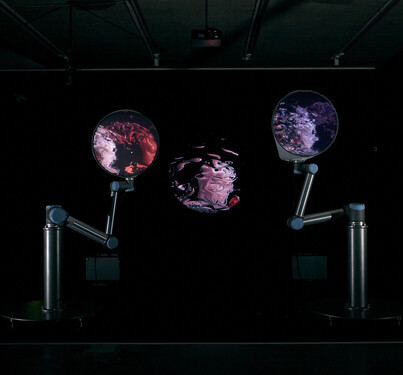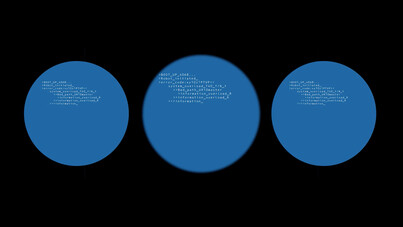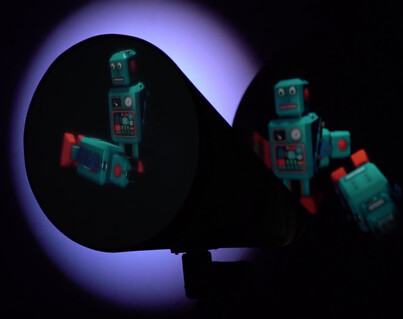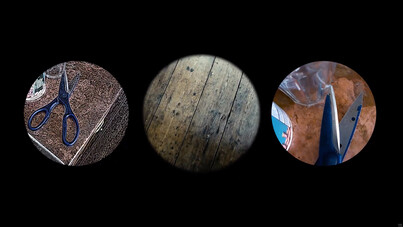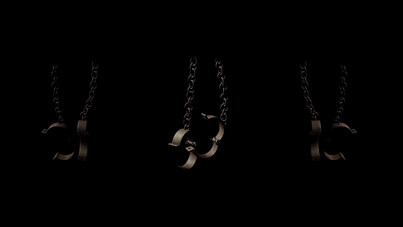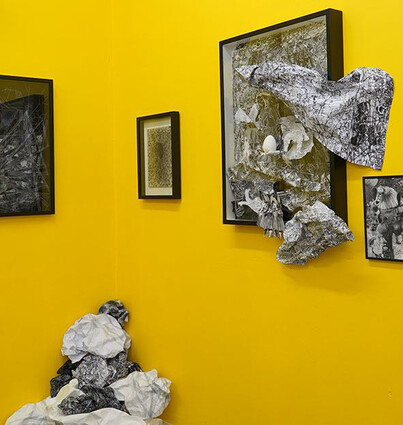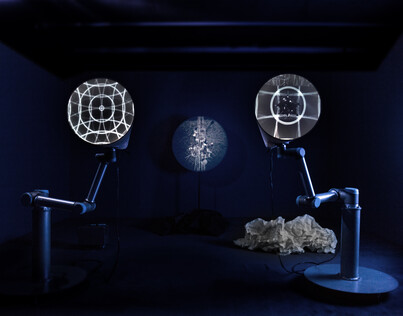Lindsay Seers
by Catherine Spencer
Reviews /
Exhibition
• 09.10.2019
Lindsay Seers’s video installation Every Thought There Ever Was opens with a bright blue computer login screen, informing us that an avatar programme is being uploaded. The work is structured around Seers’s research into Avatar Therapy: a treatment for the auditory hallucinations endured by people diagnosed with schizophrenia, currently undergoing clinical trials to determine its suitability for wider application. Invented by Julian Leff, a Professor of Psychiatry at University College London in 2008, Avatar Therapy enables patients to design a digital avatar that embodies the voices they hear. They are then able to speak back to their tormenter through guided therapy sessions, with the aim of increasing their sense of control and confidence. According to a study published in 2017,1 Avatar Therapy has a tangible impact and, in some instances, leads to auditory hallucinations ceasing altogether.
In Every Thought There Ever Was – a co-commission between Hospitalfield, Arbroath, Focal Point Gallery in Southend-on-Sea and the Metropolitan Arts Centre (MAC), Belfast – these battles between multiple voices play out across three circular screens, two of which are mounted on robotic, moving arms, and through an immersive soundtrack played through headphones. ‘You’re a piece of shit’, the avatar intones with cruel, practiced malice. Another interlocutor reassures: ‘I’m here to guide you through the voices’. Seers has long played with the use of multiple narrators in her works, including Extramission 6 (2009) and It Has To Be This Way (2009). In Every Thought There Ever Was this polyvocality accrues additional force through Seers’s inclusion of voices from throughout the long struggles for agency and representation in medicine and psychiatry. The interwoven protagonists include the gender nonconforming Victorian surgeon James Miranda Barry, and the seventeenth-century preacher George Trosse, who experienced a period of mental breakdown before embracing his dissenting ministry; towards the end, we segue into Philip K. Dick-style speculative fiction as a post-human entity addresses the audience from a future in which only insects have survived.
While Avatar Therapy has been designed specifically to address auditory hallucinations, Seers has long been preoccupied with the relationship between perception, consciousness and ontology. This is still very much in evidence, from the two robotic screens, which, as they rotate, reveal themselves to be shaped like eye cones, to the vivid imagery that pulses across them. At one point, a DNA helix rotates into view, its links formed by pairs of eyes staring out on stalks. At another, lidless eyeballs bounce around the central screen like atoms in a nuclear reaction, before the image assumes the honeycombed perspective of a fly’s compound vision. These digital creations are interspersed with brief sections of verité-style film, showing city streets viewed from the upper reaches of a high-rise building, together with shots of flying and crawling insects, offering a visual analogue for the work’s constant questioning of how the ‘real’ and the ‘virtual’ are identified and policed.
As with Seers’s previous combinations of film and installation, the experience of watching and fully processing her work is challenging, designedly impossible, due to the densely compacted and erudite references, which can be parsed in multiple ways. Take the invocation of Barry, who presented as a man but after their death was identified as having been born a woman, suggesting the possibility that Barry lived as a trans man. While on the one hand Barry functions as a shorthand for non-binary fluidity and, by extension, a welcome challenge to the suffocating rigidity of normative gender constructs, on the other Barry was employed as part of a medical establishment that has sought to control physical and psychological states. Barry’s work as an army surgeon was inextricably imbricated in the repressive mechanisms of colonialism and the British Empire. For Seers, biography indexes but also acts on history, each complicating and shaping the other.
In earlier works such as Nowhere Less Now, first shown in 2012 at the Tin Tabernacle in Kilburn, London, as an Artangel commission, Seers played with the slipperiness of autobiography to test the instability and contingency of what we understand ‘reality’ to be. Elements of Seers’s approach align with what Carrie Lambert-Beatty has identified as the ‘parafictional’, through which artists blur the boundaries between the fictional and the historical to reveal the arbitrariness of both constructions.2 In Every Thought There Ever Was, this mode is given increased heft through the narrative's connections with histories of diagnostic control and resistance to them, from R.D. Laing’s anti-psychiatry, which proposed that so-called ‘madness’ was a symptom of the instability of society as a whole rather than a given individual,3 to Michel Foucault’s archaeology of the disciplinary binary between ‘reason’ and ‘unreason’ in Madness and Civilization (1961).
Such critique is not overt, but is sharpened by the work’s display site in Arbroath. Entering the town’s former Courthouse, the visitor must focus on navigating the labyrinth of laminate floors leading to the viewing room, and on attempting to avoid colliding with fellow viewers in the pitch-black, cramped viewing area. Only on the way out might they clock the locks and bars of the building's dilapidated cells. You wonder what Seers might have done with the space if she had been able to inhabit it to the extent that she did the Tin Tabernacle, where she mined its idiosyncratic history as a home for sea cadet training and integrated this into her film, so that the encounter with the work extended to the experience of the building itself. The potential for expanding the film’s presentational context is indicated by a display of drawings presented in a street-facing gallery next to the Courthouse. These are by Seers and a number of correspondents that she has exchanged pictures with through the post; much of their imagery directly references the fantastical scenes conjured by the artist Richard Dadd, who spent much of his later life confined in a psychiatric hospital. However, they ultimately feel separate from the moving image element, rather than part of a Tin Tabernacle-style total environment.
The interpretative material produced to accompany Every Thought There Ever Was states that it ‘draws on the extraordinary brain functioning that occurs in schizophrenia’. Exploring this topic is inevitably fraught with the danger that it could veer towards problematic, potentially voyeuristic simulation. However, the work itself feels carefully focused on the representation and mediation of psychosis. During Avatar Therapy, as Seers’s polyphonic soundtrack underscores, the therapist simultaneously voices the avatar, and gives the patient encouraging directions on how to resist its attacks. In Every Thought There Ever Was, this signals release and empowerment, but may equally constitute the latest stage in the continued refraction and elision of the diagnosed subject’s own voice through its externalised depiction.




